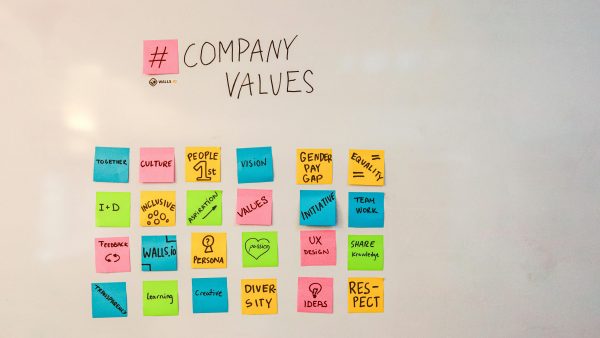The dynamics included the presentation of various hypothetical cases by a moderator, after which the fifteen participants had to share their opinions and, above all, how they would act in a given situation. In one of them, we were placed as reporters assigned to cover an earthquake. In this example, we had just arrived in the earthquake zone and found a child in a state of shock. The question we were asked was simple but shocking: would it be right to interview this child in shock?
The silence
Silence took over the room for a few minutes. Then some responded from a legal perspective, whether it was permissible to interview and then publish what a minor said without parental or guardian approval; others, from a more moral perspective, whether it was right to interview a child who had just lost his home and, possibly, his family. The discussion lasted for a quarter of an hour until one of the teachers provoked silence with a question.
– If the child was so shocked that he couldn’t speak, why would he ask him a question? As a journalist, what you are looking for is information. If a source doesn’t provide it, is it worth asking or insisting? Whether it’s a child or an adult, does it make sense to ask a question to someone who can’t speak? I would go and find a person who will answer me. Finally, what I want is to put together a note and not have an empty page. For that I need information.
The example walks in the nooks and crannies of a maxim of corporate communications: any information vacuum is always filled. Like a stomach deprived of lunch, the information vacuum will find a way to satiate its hunger, be it through rumours, other sources of information or even conspiracy theories that only seek to flood that container where something is missing. For those who think that communication is not science because it lacks formulas, we give them one: the informative zero will always be greater than the informative zero itself (or worse).
The journalist, the collaborator or whoever is hungry for information, will seek to fill the void. The risk is that this hole may be filled in the wrong way, contrary to what we really need to clarify as an organisation or, worse, the opposite of the truth, especially in this world of post-truth and fake news.
The situation in a company
For a company, it is a situation whose occurrence often goes hand in hand with reputational crisis or sensitive situations. That’s why in this type of critical or sensitive scenario, communicators often evaluate the (dis)advantages of keeping quiet and tend to talk about winning the interpretation: if you don’t speak up, someone else will. Especially those who have no idea of the facts, but are eager to get their name into a headline.
It is even worse if we are left in a vacuum in the midst of a society of preconceived ideas. In his book ‘Don’t Think of an Elephant’, linguist George Lakoff points out that people structure the world according to frames. ‘Frames are mental structures that shape our view of the world (…). Frames are neither seen nor heard (…) We also recognise frames in language, since all words are defined in relation to a conceptual frame (…)’. In concrete terms: we experience reality before it happens according to how our mind imagines it. It is easier to understand this with a crude example: if I have a frame in which the cold is bad, any winter day, no matter how beautiful, will be terrible.
For a company, these frames are key because we operate in a world of humans, sovereign beings of their lives, but not of their minds. For example, if we live in a society where private companies are judged to be harmful to the environment, an oil spill (just one example) only reinforces that concept. The battle will be lost if we add to that dissimulation, trying to keep a low profile or hoping that the story will go away. In reality, we will have preferred others to fill the information gap, either internally or externally.
Obviously, everything is subject to evaluation. One that must be made by the corporate communications team. This is why it is important to anticipate scenarios and consequences, but above all to be aware that everything communicates, even silence. ‘Truth is corrupted as much by lies as by silence,’ once said the Roman philosopher Marcus Tullius Cicero. The truth is that emptiness, if not managed, fills itself.












